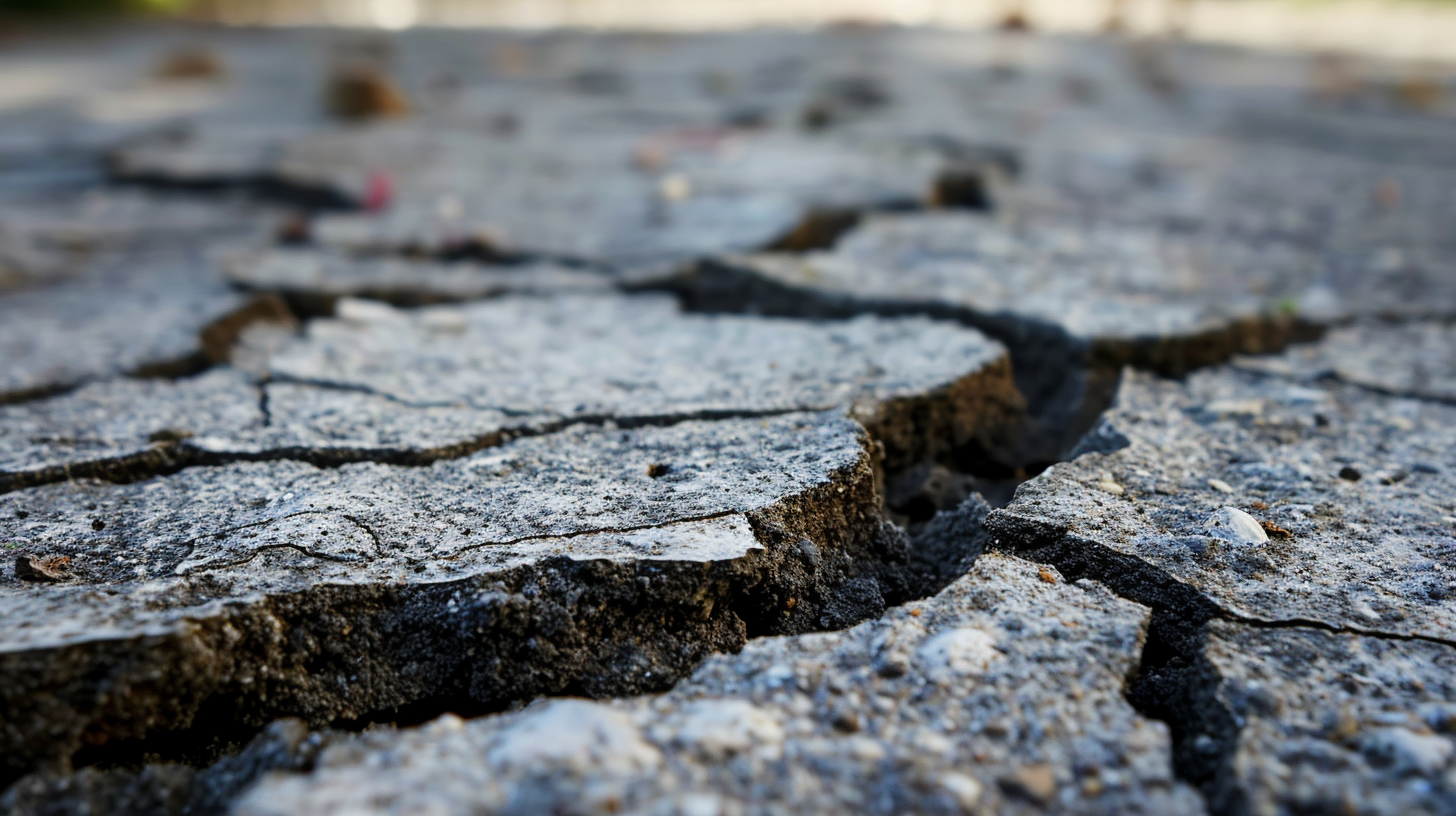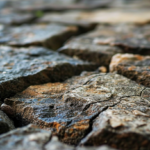Last Updated on 26th December 2023
In this comprehensive guide, we will explore the necessary steps to repair a damaged concrete driveway. Whether it’s cracks, holes, or surface damage, our professional approach will provide you with the knowledge and skills needed to restore your driveway to its former glory. By following our step-by-step instructions and utilizing the appropriate materials, you can effectively repair and maintain your concrete driveway, ensuring its longevity and enhancing the overall curb appeal of your property.
Assess the Damage
In order to accurately determine the extent of the damage to the concrete driveway, a thorough assessment of the cracks, chips, and structural integrity should be conducted by a professional contractor. Assessing the problem is crucial to understanding the scope of the repairs needed. The contractor will carefully inspect the cracks and chips, measuring their width, depth, and length. They will also evaluate the overall condition of the driveway, looking for signs of sinking or unevenness. By conducting this assessment, the contractor can determine the cost of repairing the concrete driveway. Factors such as the extent of the damage, the materials required, and the labor involved will all contribute to the final cost. It is important to have this assessment done by a professional to ensure accurate results and a proper repair plan.
Clean and Prepare the Surface
Carefully inspecting the concrete driveway for any debris or contaminants, the professional contractor ensures that the surface is thoroughly cleaned and prepared for repair. Concrete driveway maintenance is crucial for its longevity and durability. Regular cleaning and sealing are essential steps to protect the concrete from damage caused by weather, oil spills, and other contaminants. Cleaning the surface removes dirt, stains, and any loose particles, ensuring a clean and stable base for repair work. It also allows the sealant to adhere properly to the concrete. Sealing the concrete driveway acts as a protective barrier, preventing water penetration, cracking, and deterioration. It also enhances the appearance of the driveway by giving it a fresh and polished look. By following proper cleaning and sealing techniques, homeowners can ensure the longevity and aesthetic appeal of their concrete driveways.
Patch Cracks and Small Holes
Effectively addressing the current discussion topic, professional contractors utilize high-quality materials and skillfully repair patch cracks and small holes in the concrete driveway. When it comes to repairing cracks and small holes in a concrete driveway, there are various repair techniques and filling methods that can be used. One common method is to use a concrete patching compound, which is a versatile material that can be applied to the damaged area. This compound is typically mixed with water and applied to the crack or hole using a trowel or putty knife. Another popular method is to use a concrete crack filler, which is a liquid or paste-like substance that is poured into the crack or hole. This filler then hardens and forms a strong bond with the surrounding concrete, effectively sealing the damaged area. Overall, professional contractors have the knowledge and expertise to choose the appropriate repair technique and filling method based on the extent of the damage and the specific needs of the concrete driveway.
Resurface the Driveway
To effectively resurface a damaged driveway, it is important to consider three key points: choosing the right materials, proper surface preparation, and applying the resurfacer correctly. When selecting materials, factors such as durability, weather resistance, and cost should be taken into account. Additionally, thorough surface preparation, including cleaning and repairing any cracks or holes, is crucial to ensure a smooth and long-lasting resurfacing job. Finally, applying the resurfacer with the proper technique and following manufacturer’s instructions will ensure optimal results.
Choosing the Right Materials
One must consider various factors when selecting suitable materials for resurfacing a concrete driveway. Choosing the right color and finding a professional contractor are two crucial aspects to consider. When it comes to color, it is essential to select a shade that complements the overall aesthetics of the property and blends well with the surroundings. This will enhance the curb appeal and value of the property. Additionally, finding a professional contractor is important to ensure the driveway is resurfaced properly and efficiently. A skilled contractor will have the expertise and knowledge to select the right materials based on the specific needs of the driveway, such as durability, weather resistance, and maintenance requirements. They will also ensure that the materials are applied correctly, resulting in a long-lasting and visually appealing driveway surface.
Proper Surface Preparation
Adequate surface preparation is crucial for achieving a durable and smooth driveway resurfacing, as it allows for the removal of debris and ensures proper adhesion of the new materials onto the existing surface. One important step in surface preparation is surface leveling. This involves addressing any uneven areas or cracks in the concrete driveway. By leveling the surface, it allows for a more uniform and even application of the resurfacing materials, resulting in a smoother and more visually appealing finish. Another key aspect of surface preparation is concrete bonding. This involves applying a bonding agent to the existing surface before applying the new materials. The bonding agent helps to create a strong bond between the old and new materials, ensuring that the resurfacing will be long-lasting and resistant to cracking and peeling. Overall, proper surface preparation is essential for a successful driveway resurfacing project.
Applying the Resurfacer
Applying an even and sufficient amount of the resurfacer, as well as ensuring proper curing time, is crucial for achieving a durable and aesthetically pleasing finish to the driveway. When it comes to applying the resurfacer, it is essential to choose the right tools for the job. A trowel or squeegee can be used to spread the resurfacer evenly over the damaged areas. It is important to follow the manufacturer’s instructions regarding the application process, including the recommended thickness of each layer. In some cases, applying multiple layers may be necessary to achieve the desired result. However, it is important to allow sufficient drying time between each layer to ensure proper bonding and curing. By following these guidelines and using the appropriate tools, homeowners can effectively repair their damaged concrete driveways and restore them to their former glory.
Seal and Protect the Repaired Areas
To ensure longevity and durability, properly sealing and protecting the repaired areas is crucial in maintaining the integrity of the concrete driveway. After using appropriate repair methods to fix any cracks or damages in the concrete, it is important to take additional steps to protect the repaired areas from further deterioration. One effective way to achieve this is by applying a high-quality concrete sealer. A concrete sealer acts as a protective barrier, preventing moisture, chemicals, and other harmful substances from penetrating the surface of the concrete. This not only enhances the appearance of the driveway but also ensures long-term durability. Additionally, regular maintenance such as cleaning and resealing every few years can further extend the lifespan of the repaired concrete driveway.
Maintain Your Concrete Driveway
Effectively maintaining your concrete driveway is essential for preserving its structural integrity and avoiding costly repairs in the future. Regular driveway maintenance is crucial to prevent cracks, potholes, and other damage caused by weather conditions, heavy vehicles, and everyday wear and tear. To care for your concrete driveway, start by keeping it clean and free of debris. Regularly sweep or use a leaf blower to remove leaves, dirt, and other debris that can accumulate and cause deterioration. Additionally, consider sealing your concrete driveway every few years to protect it from moisture and prevent cracks. This will help extend its lifespan and maintain its appearance. Lastly, avoid using harsh chemicals or de-icing agents that can damage the concrete surface. By following these maintenance tips, you can ensure that your concrete driveway remains in good condition for years to come.




